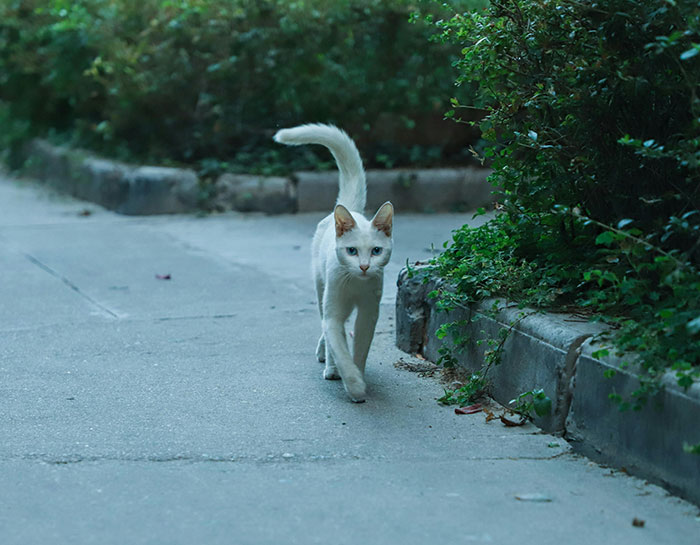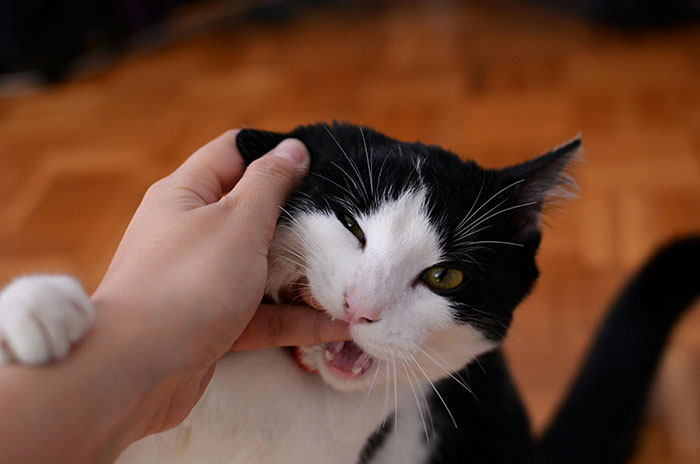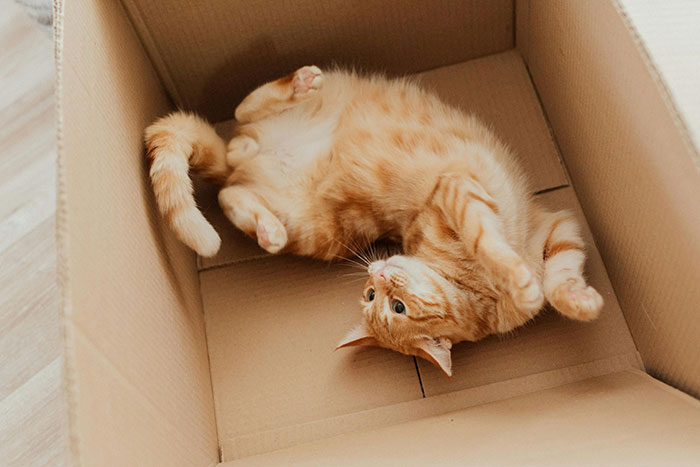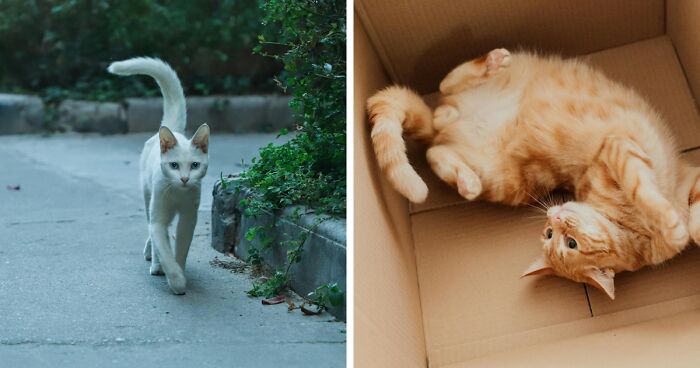Are you curious about what your cat’s tail wagging means? I mean, we all know what a dog’s wagging tail means, but is it the same for their feline friends? Well, you’re not alone. Many cat owners have wondered about the mystery of cat tail wagging.
Cats usually wag their tails to show a wide range of emotions. Tail wagging in cats could signify excitement, aggression, and even a sleep stage.
- Cat tail wagging can signal a range of emotions, from excitement to aggression.
- Tail position and wagging speed are key to understanding cat tail language.
- A puffed-up tail indicates a nervous cat, while rapid twitches show excitement.
- Tail lashing may point to conditions like feline hyperesthesia syndrome.
- Unlike dogs, a wagging cat tail does not always signify happiness.
The key to deciphering the cat’s tail wag is to note how your cat positions its tail, the tail wagging speed, and accompanying body cues.
Cat tail language is a real thing, and in today’s article, we’ll be helping you decode it.
The information provided herein is for informational purposes only. Please refer to our disclaimer for more details..
Why cat tail language is important
Our cats may not be able to speak to us, but they often use their body language to communicate. One of their ways of communicating is tail movement. Your cat’s tail language is important because it aids communication and bonding and even helps you monitor your feline friend’s health.
Just like dogs, cats use their tails to express their emotions. The position, shape, and movement of a cat’s tail can help you understand just how they feel.
For example, if your cat feels nervous, you may notice a puffed-up tail. On the other hand, if they’re excited, cats tend to move their tails in quick, rapid twitches.

Image credit: Cats Coming
Changes in a cat’s body language can also be a health indicator. A hanging tail could indicate that your cat is weak, injured, or even in pain. On the other hand, tail lashing could point to a neurological syndrome such as feline hyperesthesia syndrome.
Misconception about the cat’s tail wag
A common misconception about the cat’s tail wag is that it always means that they are happy. Because it is well known that dogs show excitement by wagging their tails, people assume the same thing about their feline companions.
However, there are many reasons why our pets wag their tails, and the wagging speed, tail position, and other body cues can help clue you into what it means.
Reasons why cats wag their tails
Your cat is confident
A cat that struts around the house with its tail held high, and a gently wagging tail tip is trying to communicate that it is confident and self-assured. This tail movement also means that your cat feels comfortable in its environment.
Your cat is about to get aggressive
Cats wag their tails when they’re annoyed. In such cases, you may notice your cat’s tail swishing from side to side or see a whipping motion. A swishing tail is usually held low to the ground and may be followed by angry vocalizations.

Image credit: Crina Doltu
A characteristic sign seen in angry cats is piloerection. The tiny muscles at the base of hair follicles contract, making their fur stand. Other signs of annoyance in cats include flattened ears, swatting, dilated pupils, and excessive grooming.
If you notice your cat slowly swishes their tail during interaction with a strange cat, it may be a sign that it wants to be left alone.
Your cat is afraid
If your cat is wagging its tail low to the ground, it’s a sign that it is scared. Fearful cats often wag their tail in a low position or have it tucked between their legs as a defensive posture. You may also notice their tails wrapped around their body.
Your cat is focused
If your cat is wagging their tail along with a short, quick twitch, it may concentrate on something. This is usually seen when cats are hunting or preparing to pounce on a cat toy. In addition, focused cats may hold their tails rigidly in a straight position.
Your cat is dreaming
Cats also wag their tails while sleeping. Gentle tail movements show that they are relaxed and comfortable. You may also notice tail movement when a cat is experiencing REM (Rapid eye movement) sleep.
According to Sleep Doctor, cats display quick eye movements, brain activity resembling waking during REM sleep, and a general loss of muscle tone with occasional twitches.
Kittens, in particular, twitch and wag their tails more during sleep. This behavior is often seen in young cats and tends to decrease as they mature.
Your cat is excited
Some cats wag their tails in a quivering or vibrating motion to show that they’re playing and enjoying your company. Your cat may also wag its tail to greet you after being left alone all day. Other signs of excitement in cats include kneading, a quick tail swish, and purring.
Why do cats wag their tails while lying down?
As discussed above, cats wagging their tails may mean different things. A lounging cat could wag its tail to show contentment and happiness or frustration.
To decode what your cat is trying to say, take note of the tail position and how your cat is waving their tail.

Image credit: Arina Krasnikova
If you pet your feline friend and notice them wag and thump their tail, chances are that your cat is happy and enjoys your company. However, cats may wag their tails as a signal that they are about to pounce on something.
It may be hard to decipher what it means when a cat wags its tail while lying down. However, by paying attention to the environment, movement of the tail, or a tail’s position, you can find out everything you need to know.
Other ways cats communicate
Other than reading your cat’s tail language, there are other ways to understand your cat better. Cats use their eyes, ears, body posture, and vocalizations to communicate with their owners and, sometimes, another cat. Noticing these cues when interacting with your cat can help strengthen your bond and understand your cat’s intentions.
Here are a few things to note:
1.) If a cat’s ears are facing forward, it means the cat is alert or interested. If they are flattened, it’s a sign of anxiety or aggression.
2.) A cat with dilated pupils may be excited, fearful, or aggressive. If the eyes are slowly blinking, it means they trust you.
3.) Soft purring usually means that your feline is relaxed. You may notice this behavior while you’re petting your cat. Loud purring with vibrations could mean distress or excitement.
4.) A cat with an arched back, stiff tail muscles, and fur standing is afraid or aggressive. The best response in such cases is to give the cat space and attempt to control the triggering factor.
Conclusion
Like their canine friends, cats can use different tail movements and positions to teach us a lot about themselves. Noticing your cat’s body language will help you know what it wants and how best to care for it.
Frequently asked questions
How do cats express happiness?
Cats express happiness through purring, relaxed body language, and often, a gently swaying tail held high.
Why is my cat wrapping her tail around me?
When your cat has its tail curled around you, it’s usually a sign of affection and trust. This means that your cat feels secure and is trying to bond with you.
2Kviews
Share on Facebook
 Dark Mode
Dark Mode 

 No fees, cancel anytime
No fees, cancel anytime 


















































7
0